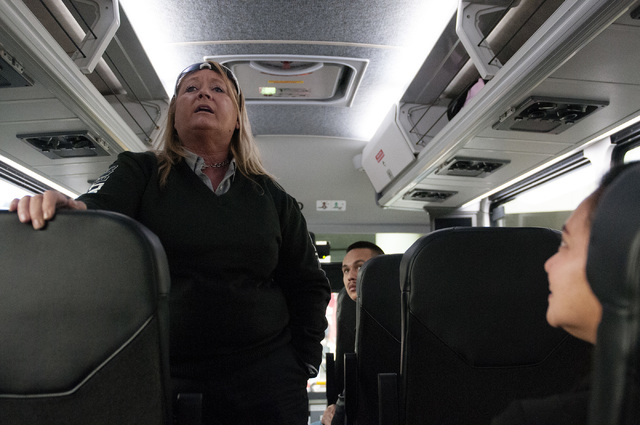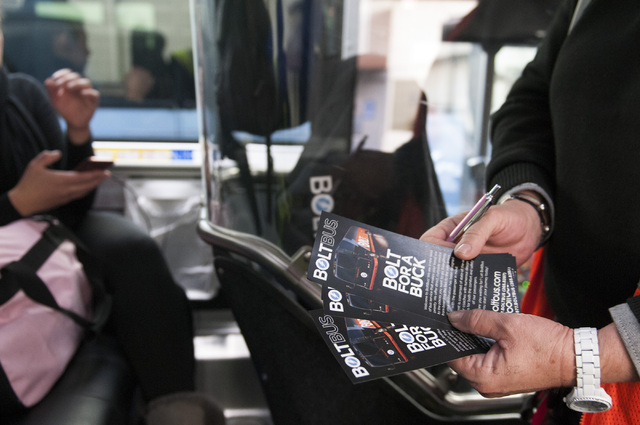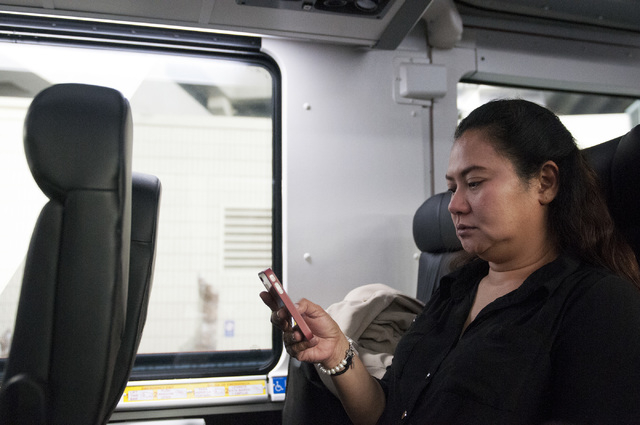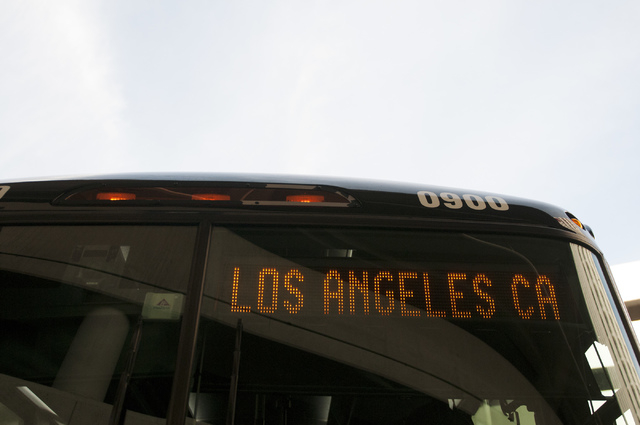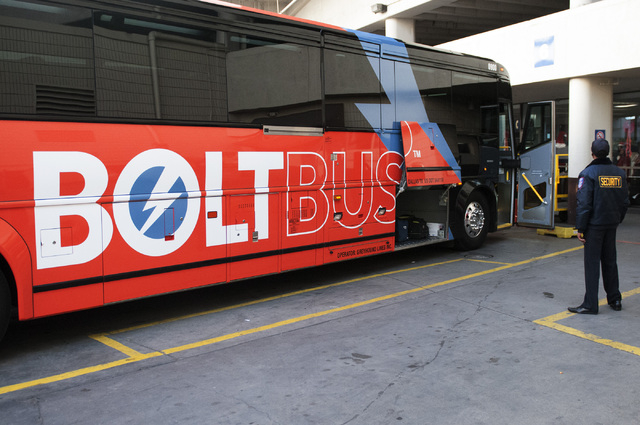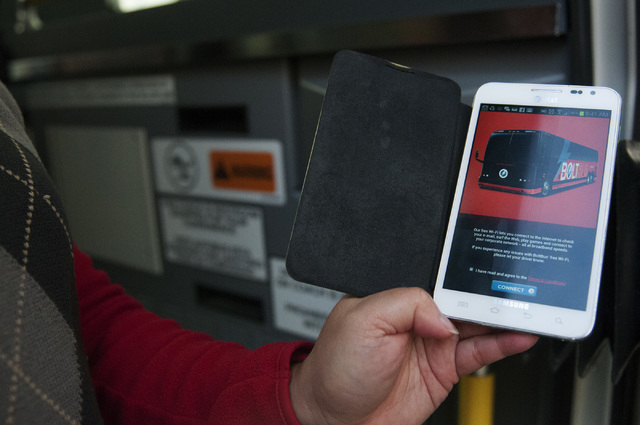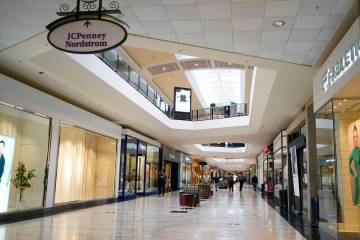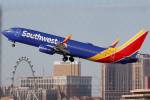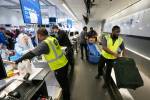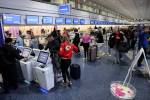2013 was year of several advances in transportation
Although 2013 did not generate a lot of hoo-ha in the transportation industry, at least it ended on an up note.
The BoltBus affiliate of Greyhound started driving between Las Vegas and Los Angeles once a day during the week, bumping up to three a day for the weekend. Although some people view bus travel as a last resort or worse, BoltBus runs what Los Angeles operations manager Rachel Harris calls “a luxury bus experience.”
Included in the ticket price, which can run as low as $1 depending on demand and advance purchase, are assigned seats, more legroom than regular Greyhound, leather upholstery, on-board Wi-Fi, power ports, airline-style boarding groups and no baggage limits. And the buses are new, Harris said.
The highest price is $35, paid in cash to the driver. Otherwise passengers buy seats online or pay a $3 charge for calling the reservation center.
This approach closely resembles Greyhound Express, the premium service that launched last year on the route.
Both make only one stop en route, shaving an hour or two off regular Greyhound times.
BoltBus also borrows heavily from arch rival Megabus, which inaugurated the route one year ago. In fact, BoltBus is in talks to move its departures from the Greyhound station downtown to the Regional Transportation Commisssion’s South Strip Transit Terminal, also used by MegaBus.
The Los Angeles terminus for both is Union Station. There, BoltBus is building something of a hub, with connections to San Diego and the San Francisco Bay Area timed at about one hour.
The upgraded bus service took root in the Northeast, where the distances between big cities are shorter and transit is more ingrained into the lifestyle. Although Megabus claims it lures many of its passengers from cars, as 2014 arrives, it is still unclear whether the Las Vegas routes bring new visitors, switch people from cars or just other buses.
AIR
If McCarran International Airport were an airplane it would be in a holding pattern this year.
Passenger counts through October were only 0.2 percent higher than 2012, not the sort of numbers the Strip needs to boost visitor counts, room rates and occupancy. Airlines have kept their schedules on a short leash, having discovered in recent years that a tight supply of seats allows them to raise prices and earn consistent profits.
The first quarter of 2014 looks much the same. The schedules loaded into reservation systems show the number of seats growing less than 2 percent, with international carriers doing a little better than domestic counterparts.
In October, Las Vegas hosted the World Routes conference matching airlines with airports lobbying for more flights. How much that will change domestic airlines is open to debate because they have all come here for years and know the market well. Because of the long time it takes a foreign carrier to open a new destination, any contacts made at the conference may not bear fruit this year, although a carrier or two already well into the process might announce that it will include Las Vegas into its system.
Las Vegas-based Allegiant Air suffered a major “oops” moment when it had to ground much of its fleet for a few days after an emergency slide malfunctioned while evacuating passengers from a plane on a McCarran taxiway. In general, it slowed its rapid growth of the recent past, but showed signs of picking up the pace at year’s end with new routes largely involving Florida.
Allegiant’s passenger counts at McCarran, where it is the fifth-largest carrier, dipped slightly during the year with little hint of reversing the trend. Plans are still on track to launch flights to Mexico during 2014. In addition, Airbus A320s will come on line in bigger numbers, bringing a younger generation of equipment to a fleet dominated by elderly MD-80s.
The major variable at McCarran will be how the combination of American Airlines and US Airways shakes out. It is still hard to tell whether they will maintain their flight counts because they don’t overlap, or redeploy their planes elsewhere as United did after its merger with Continental.
RAIL
After mulling it over for 2½ years, the U.S. Transportation Department rejected the $5.5 billion federal loan requested by the backers of the proposed XpressWest bullet train between Las Vegas and Victorville, Calif. Not even the garnish of planning to turn east and connect with the Los Angeles commuter rail system or the attempt to portray it as a cornerstone of a high-speed rail system throughout the West could sway Washington.
The official reason for the rejection was that XpressWest could not comply with the Buy America requirements that come with a loan. However, there were also hints the numbers didn’t work, with the government wanting to shrink the loan and receive more upfront from private sources.
Sen. Harry Reid has vowed to get the loan approved in some form, although little progress has yet emerged.
ROAD
California finally moved forward with a new checkstation on southbound Interstate 15, with the realignment of the highway and a facility for the California Highway Patrol heading into construction. In a couple of years, an agricultural inspection station is supposed to follow.
But in a sense, a new bug station to replace the 5-decade-old one at Yermo grew less important. Because of budget constraints, inspectors no longer stop passengers to ask if they are carrying fruits and vegetables. This gift to the tourist industry, although not intended that way, will eliminate the long lines that used to form at the station during Sundays and ends of holidays, as people headed home to Southern California.
SEA
MGM Resorts International will integrate a nautical theme into its portfolio by adding a cruise ship terminal to the arena it proposed to build on the Strip. (Sorry: That was left over from April Fool’s Day.)




